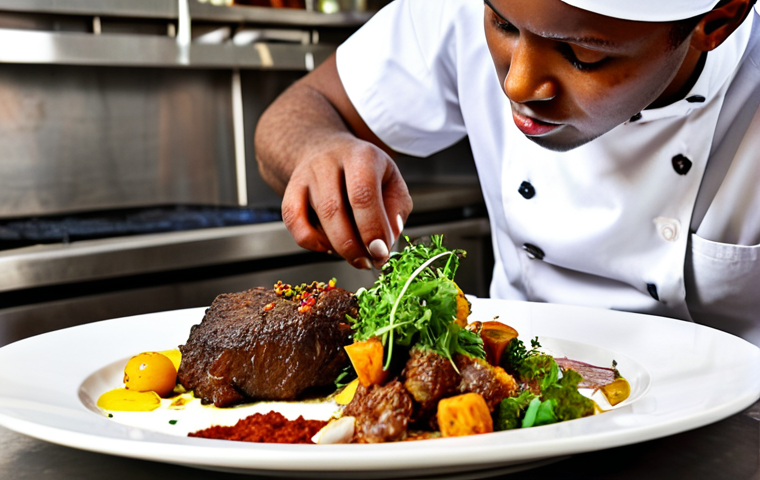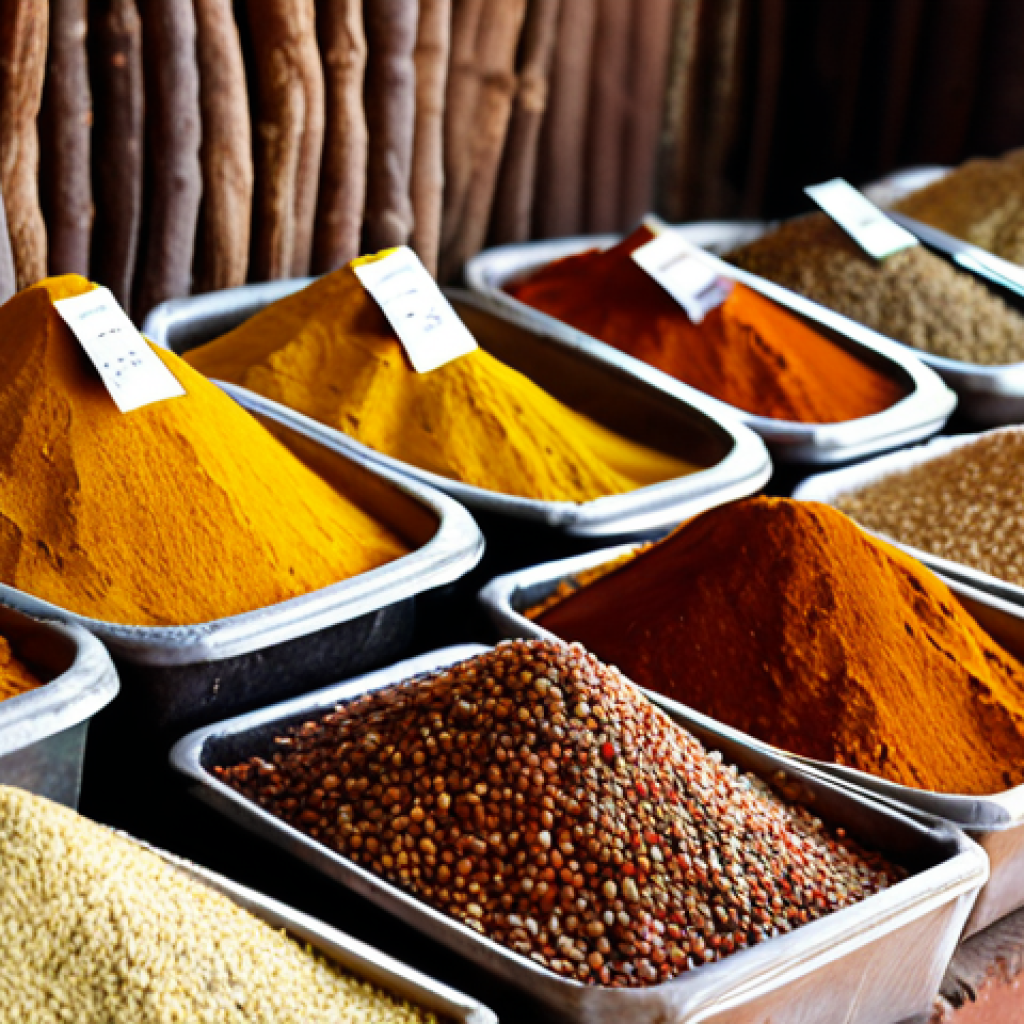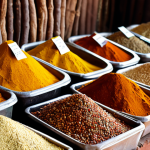Have you ever wondered what flavors dance in the kitchens of Somalia? Beyond the headlines, there’s a vibrant culinary scene, and today, we’re shining a spotlight on a chef who’s truly making waves.
Forget celebrity chefs with Michelin stars for a moment; we’re talking about someone deeply rooted in their community, someone who’s not just cooking food, but preserving and innovating Somali culinary traditions.
From the bustling markets of Mogadishu to the diaspora communities worldwide, this chef’s influence is undeniable. They’re using social media to share recipes, stories, and connect with a global audience hungry for authentic flavors.
Thinking about the future, chefs like this are essential in ensuring Somali cuisine thrives. Let’s delve deeper and discover more about this culinary gem.
Alright, let’s dive into the flavorful world of Somali cuisine and explore the rising stars shaping its future!
Bridging Generations Through Spices: The Art of Xawaash Blends

The heart of Somali cooking lies in its spice blends, and I’ve seen firsthand how certain chefs are elevating the humble xawaash to an art form. It’s not just about throwing together cumin, coriander, black pepper, and turmeric.
It’s about understanding the subtle nuances of each spice, knowing where it comes from, and how it interacts with other ingredients.
Sourcing Directly from Farmers
I know a chef who makes it a point to source spices directly from local farmers, ensuring both quality and fair prices. He even visits the farms, learning about the growing conditions and the stories behind each spice.
This dedication translates into a xawaash blend that is bursting with freshness and authenticity. You can literally taste the difference!
Crafting Signature Blends
This particular chef I’m thinking of, he doesn’t just stick to the traditional xawaash recipe. He experiments with different combinations, adding a touch of cardamom for warmth, or a pinch of cloves for depth.
These are his signature blends, and they are what set his dishes apart. One time, I watched him meticulously grind each spice by hand, explaining how the texture affects the flavor release.
It was fascinating!
Preserving Traditional Techniques
While innovation is important, it’s equally crucial to preserve traditional techniques. Some chefs are dedicated to using the same methods their grandmothers used, grinding spices with a mortar and pestle, and roasting them over an open fire.
This not only preserves the flavors but also the cultural heritage associated with Somali cuisine.
Reimagining Traditional Dishes: From Sambusas to Hilib Ari
Okay, so Somali food is comforting, but sometimes it needs a bit of a twist. Think about the classic sambusa. Everyone loves it, right?
But what if you filled it with something unexpected, like spiced lentils or roasted vegetables?
Elevating Street Food Staples
I recently tried a sambusa filled with a spicy lentil mixture at a food stall. It was a revelation! The chef had taken a familiar street food staple and elevated it to something truly special.
It was crispy, flavorful, and satisfying.
Modernizing Meat Dishes
Then there’s hilib ari (goat meat), a staple at celebrations. One chef I follow marinates it overnight in a blend of yogurt, ginger, and garlic before slow-roasting it to perfection.
The result is incredibly tender and flavorful. They also experiment with different cuts of meat, using sous vide techniques to achieve maximum tenderness.
Adding a Vegetarian Touch
Somali cuisine isn’t particularly known for its vegetarian options, but some chefs are changing that. They’re creating innovative dishes using locally sourced vegetables and spices, like a butternut squash stew with coconut milk and ginger.
Harnessing the Power of Social Media: Building a Global Community
Chefs are using social media to share their recipes, connect with their fans, and build a global community around Somali cuisine.
Instagram as a Culinary Canvas
Instagram is the perfect platform for showcasing the vibrant colors and textures of Somali dishes. Chefs are posting mouthwatering photos and videos, attracting a wider audience to their culinary creations.
YouTube Tutorials for the Home Cook
YouTube is another powerful tool for sharing recipes and techniques. Chefs are creating step-by-step tutorials that make Somali cooking accessible to home cooks around the world.
TikTok: Short, Sweet, and Savory
TikTok’s short-form video format is ideal for quick recipe demonstrations and behind-the-scenes glimpses into the kitchen. I’ve seen chefs use TikTok to share their tips and tricks for making the perfect bariis (rice).
The Importance of Sustainable Sourcing: Supporting Local Farmers
Sustainable sourcing is becoming increasingly important in the culinary world, and Somali chefs are no exception. I’m seeing more and more chefs who are committed to supporting local farmers and using ethically sourced ingredients.
Building Relationships with Local Producers
Chefs visit local farms, meet the farmers, and learn about their growing practices. This not only ensures the quality of the ingredients but also supports the local economy.
Promoting Fair Trade Practices
Fair trade practices are essential for ensuring that farmers receive fair prices for their products. Chefs are supporting fair trade organizations and promoting these practices to their customers.
Reducing Food Waste
Food waste is a major problem in the food industry. Chefs are implementing strategies to reduce waste, such as using leftover ingredients to create new dishes or composting food scraps.
Preserving Culinary Heritage: Documenting Traditional Recipes
Preserving culinary heritage is crucial for ensuring that traditional recipes are not lost over time. I know some chefs are dedicated to documenting these recipes, interviewing elders, and sharing their knowledge with future generations.
Interviewing Elders and Gathering Stories
They are interviewing elders, collecting their recipes, and documenting their stories. This is a valuable way to preserve the culinary heritage of Somalia.
Creating Cookbooks and Online Resources
The recipes are compiled in cookbooks and online resources, making them accessible to a wider audience.
Teaching Cooking Classes and Workshops
Cooking classes and workshops pass down traditional techniques to the next generation. I actually attended one of those workshops. I learned how to make proper sabaayad.
Innovating for the Future: Fusion Cuisine and Modern Techniques
While preserving tradition is important, innovation is also essential for the future of Somali cuisine.
Experimenting with Fusion Cuisine
Some chefs are experimenting with fusion cuisine, blending Somali flavors with other culinary traditions, such as Italian or Ethiopian.
Embracing Modern Cooking Techniques
Modern cooking techniques, such as sous vide and molecular gastronomy, are used to enhance the flavors and textures of Somali dishes.
Creating New Dishes and Flavors
They are creating new dishes and flavors that are both innovative and respectful of Somali culinary heritage. I even saw someone making Somali pasta! Never thought I would say that.
Here’s a table summarizing some of the key aspects we’ve discussed:
| Aspect | Description | Examples |
|---|---|---|
| Spice Blends (Xawaash) | Art of blending spices, sourcing, and techniques. | Sourcing directly from farmers, crafting signature blends, preserving traditional techniques. |
| Reimagining Dishes | Modernizing traditional Somali cuisine. | Elevating street food staples, modernizing meat dishes, adding a vegetarian touch. |
| Social Media | Using social media to connect with a global community. | Instagram as a culinary canvas, YouTube tutorials, TikTok for quick recipes. |
| Sustainability | Supporting local farmers and using ethically sourced ingredients. | Building relationships with local producers, promoting fair trade practices, reducing food waste. |
| Preserving Heritage | Documenting traditional recipes and sharing knowledge. | Interviewing elders, creating cookbooks, teaching cooking classes. |
| Innovation | Experimenting with fusion cuisine and modern techniques. | Fusion cuisine, modern cooking techniques, creating new dishes. |
I hope this gives you a better picture of how Somali chefs are revolutionizing the culinary scene! Alright, here we go!
In Conclusion
It’s incredibly inspiring to witness the renaissance of Somali cuisine, driven by passionate chefs who respect tradition while fearlessly embracing innovation. From meticulously crafted xawaash blends to reimagined classic dishes and savvy use of social media, they’re not just cooking food; they’re weaving a richer, more vibrant cultural tapestry. The future of Somali food looks bright, promising exciting flavors and experiences for food lovers around the globe.
Good to Know
1. Xawaash is Key: Experiment with different ratios of cumin, coriander, turmeric, and black pepper to find your perfect blend.
2. Embrace the Spice: Don’t be afraid to use chili peppers or other spices to add some heat to your dishes.
3. Slow Cooking is Your Friend: Many Somali meat dishes benefit from long, slow cooking, resulting in tender and flavorful results.
4. Don’t Forget the Rice: Bariis (rice) is a staple of Somali cuisine, often served with stews and meat dishes. Learn to make it perfectly fluffy!
5. Seek out Somali Restaurants or Communities: Exploring local Somali restaurants or connecting with Somali communities can provide invaluable insights into the cuisine and its culture.
Key Takeaways
Somali chefs are revolutionizing their cuisine by honoring tradition, innovating with new techniques, and connecting with a global audience. Sustainable sourcing and preserving culinary heritage are also becoming increasingly important. Whether through artful spice blends, modernized dishes, or savvy social media use, Somali cuisine is gaining recognition and appreciation worldwide.
Frequently Asked Questions (FAQ) 📖
Q: Who is this chef and what makes them so special compared to other well-known chefs?
A: Well, this isn’t your typical celebrity chef. We’re talking about a culinary artist deeply ingrained in the Somali community. What sets them apart is their dedication to preserving and innovating Somali culinary traditions, from sourcing ingredients at local markets to sharing recipes and stories online.
It’s about authenticity and community impact, not Michelin stars. I saw a video online of them teaching young diaspora kids how to make sambusas, and it was just so heartwarming.
Q: How is this chef using social media, and what impact is it having on Somali cuisine’s popularity?
A: From what I’ve been following, they’re a social media whiz! They’re sharing recipes, cooking tips, and personal stories that connect with a global audience.
It’s like they’re opening up their kitchen to the world. This exposure is bringing Somali cuisine to a whole new audience, creating a buzz and making people more curious about the flavors of Somalia.
My friend in London actually tried making bariis iskukaris after seeing their post, and she raved about it!
Q: Why are chefs like this one crucial for the future of Somali cuisine?
A: Honestly, they’re vital. They’re the bridge between generations and cultures. By sharing their knowledge and passion, they’re ensuring that Somali culinary traditions don’t just survive but thrive.
They’re inspiring younger generations to embrace their heritage and encouraging innovation while respecting the roots of Somali food. Think about it: without these culinary ambassadors, Somali cuisine risks being lost in the shuffle.
I believe they are the key to keeping these traditions alive and evolving for years to come.
📚 References
Wikipedia Encyclopedia
구글 검색 결과
구글 검색 결과
구글 검색 결과
구글 검색 결과



